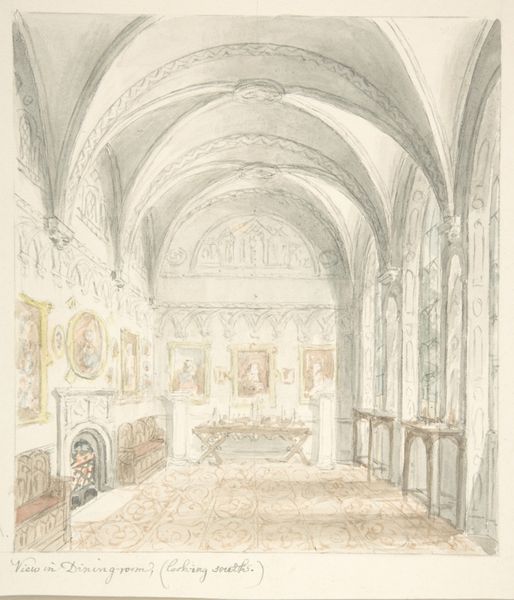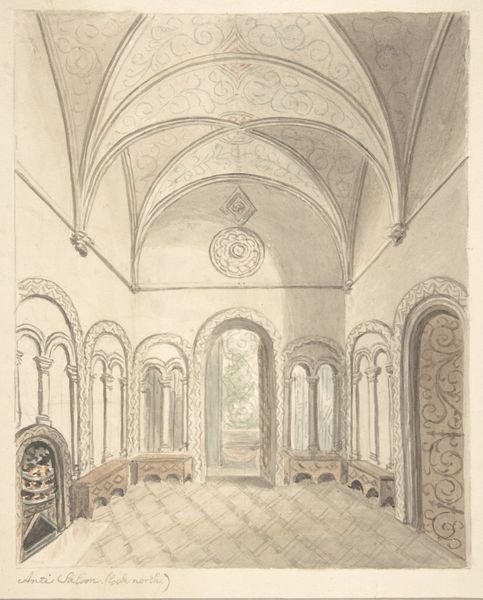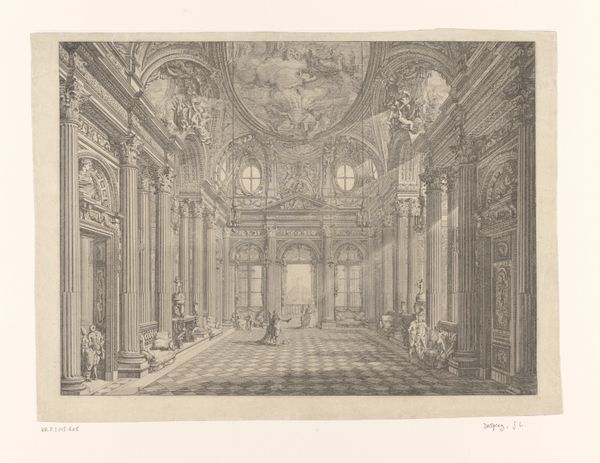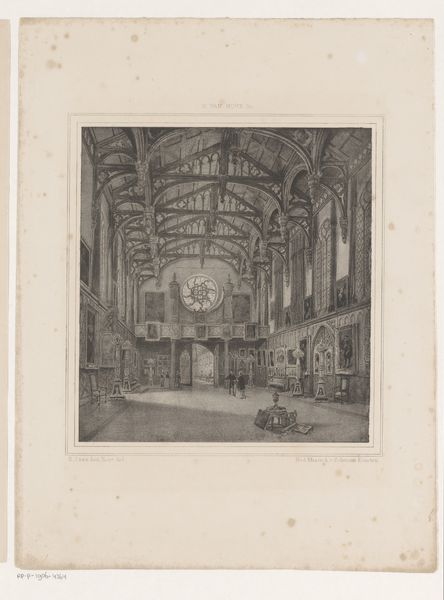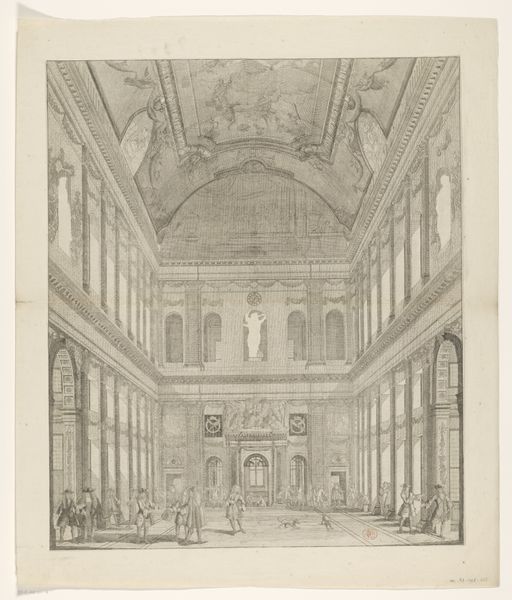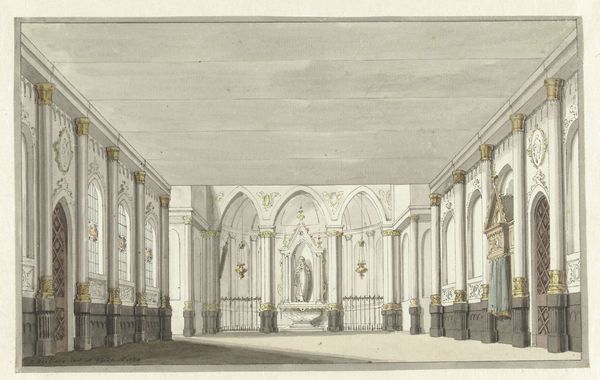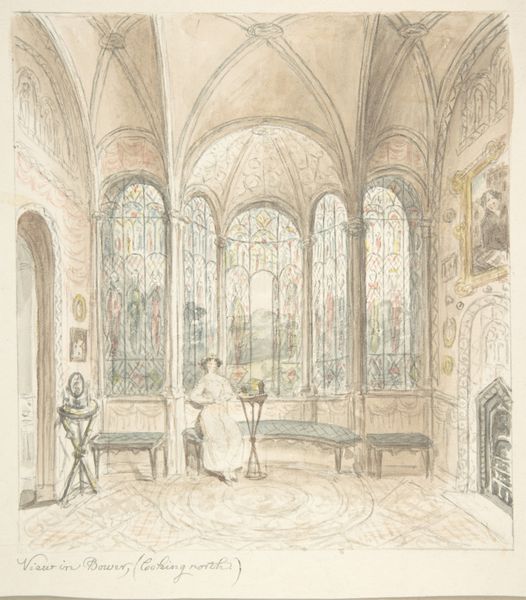
drawing, print, architecture
#
architectural sketch
#
drawing
# print
#
landscape
#
romanticism
#
architecture
Dimensions: sheet: 14 3/16 x 12 15/16 in. (36.1 x 32.8 cm)
Copyright: Public Domain
Curator: John Carter’s “Drawing Room of Lea Castle, Looking West” from around 1811-1821 offers a fascinating glimpse into the Romantic era’s fascination with interior spaces and the picturesque. What's your initial reaction to this piece? Editor: Austere, yet grand. The muted palette almost drains the color, leaving an emphasis on form. I'm immediately drawn to the vaulted ceiling and how it dominates the space. The repetition of the archways is mesmerizing. Curator: Precisely. The choice to depict Lea Castle is deliberate. As a fading estate, it reflects the Romantic obsession with ruins and the passage of time, concepts highly romanticized and connected to political commentary against aristocratic decadence. Editor: I see your point. Yet the artist also highlights design. Consider how light is distributed so precisely. And those statues, so symmetrically positioned between framed artwork above that fireplace, speak volumes about an orderly mind creating an elegant illusion of perfect balance. Curator: True, but look closer at the historical context! Carter documented architectural antiquities as political acts—preserving visual records against negligent owners who, because they pursued personal gains or political ones, demolished our cultural history in the name of progress. This is one image fighting the erasure of important English monuments! Editor: And isn’t that a function of great artistic strategy? It is indeed more persuasive due to how such subtle touches allow one to notice the political elements so neatly entwined inside architectural details. Curator: The details certainly matter, informing an appreciation for historic forms endangered by cultural changes. Think about Carter exhibiting his images for other artists and influencing generations concerned with heritage preservation. Editor: That's undeniable. But I can’t help going back to the artwork and just revel in its construction. It strikes me how everything—lines, shadows, details, shapes—serve architectural storytelling on its own. Curator: Which shows perfectly how we must account for art’s intersection with its time if we are to appreciate it fully. By revealing its significance within evolving conversations surrounding societal values, political structures, and philosophical underpinnings, history empowers insight into art—allowing better comprehension. Editor: A beautifully insightful summary that provides even more context for observing how, sometimes, even art conveys profound feelings using only shapes combined with an understated romantic aesthetic!
Comments
No comments
Be the first to comment and join the conversation on the ultimate creative platform.

